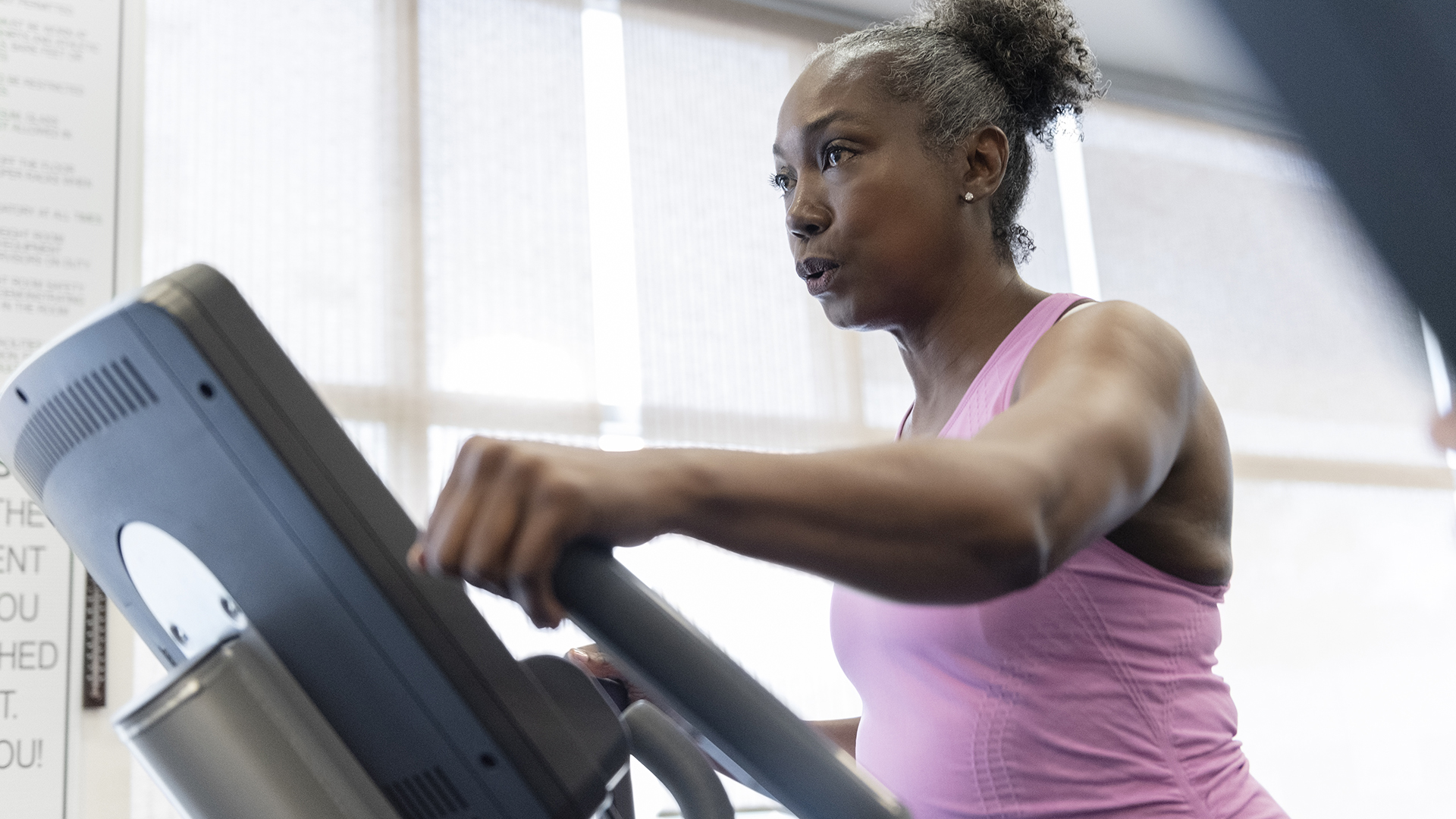Looking for an all-rounder exercise machine? The best elliptical machines or cross-trainers work every part of your body, including your arms, legs, cores, glutes, and more. Even better, they get your heart pumping which is beneficial for your cardiovascular health.
Like an exercise bike, elliptical machines offer you the combination of a high-intensity, low-impact workout that’s gentle on your joints. With the cross-trainer, your feet stay planted firmly in the pedals which minimizes strain on your joints and knees as compared to running on the road or on one of the best treadmills. This is great news for people who are just starting out, recovering from an injury or looking to mix up their workout routine. With options to adjust the incline and resistance, you can create a workout that suits your preferences and fitness level.
Before you invest, it’s worth checking that you have enough space to accommodate an elliptical. If you’re short on room, you may want to check out alternative types of the best home gyms as even the more compact models require space. Another key consideration is budget. You can find elliptical machines for under $500 though the higher end-options come in at about $1,000. The more expensive models tend to offer additional features such as heart rate monitoring and workout tracking. If you opt for a cheaper model, you may want to use the money saved for one of the best fitness trackers instead.
An elliptical machine is a great choice if you’re looking for a high-intensity, low-impact workout that you can do at your own pace without having to leave home. There’s a lot to consider when figuring out which one is for you, so we’ve rounded up our picks of the best elliptical machines.
The best elliptical machines we recommend
Why you can trust Top Ten Reviews Our expert reviewers spend hours testing and comparing products and services so you can choose the best for you. Find out more about how we test.
The best elliptical machine overall
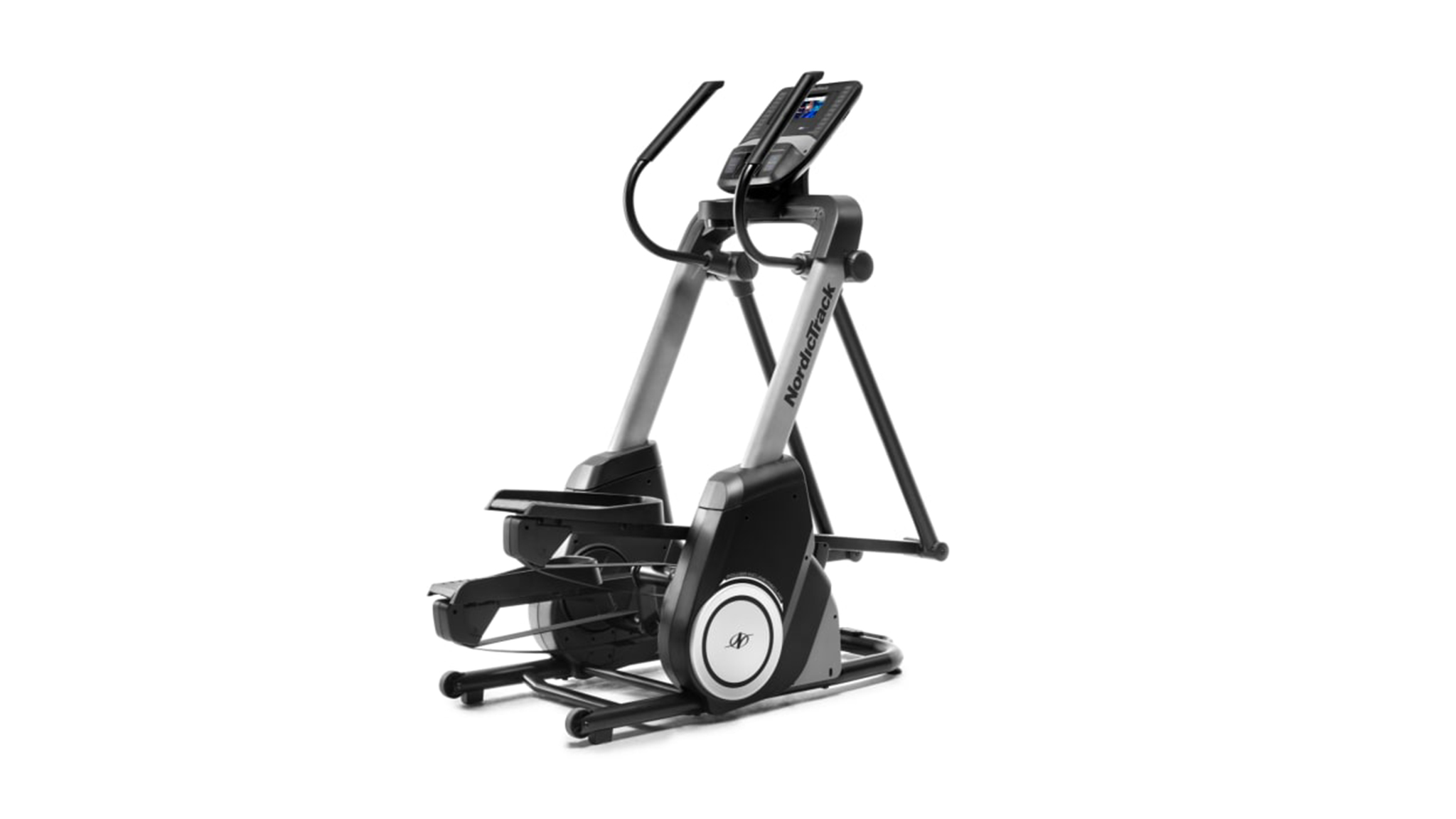
If you’re looking for a versatile piece of workout equipment that combines the movement of an elliptical, treadmill, and stair stepper, the NordicTrack FS7i is the best elliptical machine for you.
This flexible and low-impact cross-trainer offers an impressive 32-inch stride length, glider-like motion, and light to moderate resistance across its 24 levels. The center-drive design promotes balance and also helps keep the footprint of this elliptical small so it’s great if space is an issue.
The FS7i also comes loaded with 35 built-in workout programs, so you can choose a routine optimized for your specific goals, whether that’s calorie burning, endurance training or both. You also get a year’s free membership to iFit, which offers Google Maps workouts so that you can push yourself to your limits all over the globe, from the golden sands of a Hawaiian beach to the challenging climb of Japan’s Mt Fuji.
Want a more personalized approach? Join one of the on-demand workouts and an iFit trainer will use LIVE resistance and incline control to help you meet your goals and make sure you’re getting the best fitness experience possible.
Granted it’s not the cheapest cross-trainer on the market, but given the versatility and impressive array of programs and features, we reckon you’re getting serious bang for your buck with the FS7i.
The best elliptical machine for small spaces
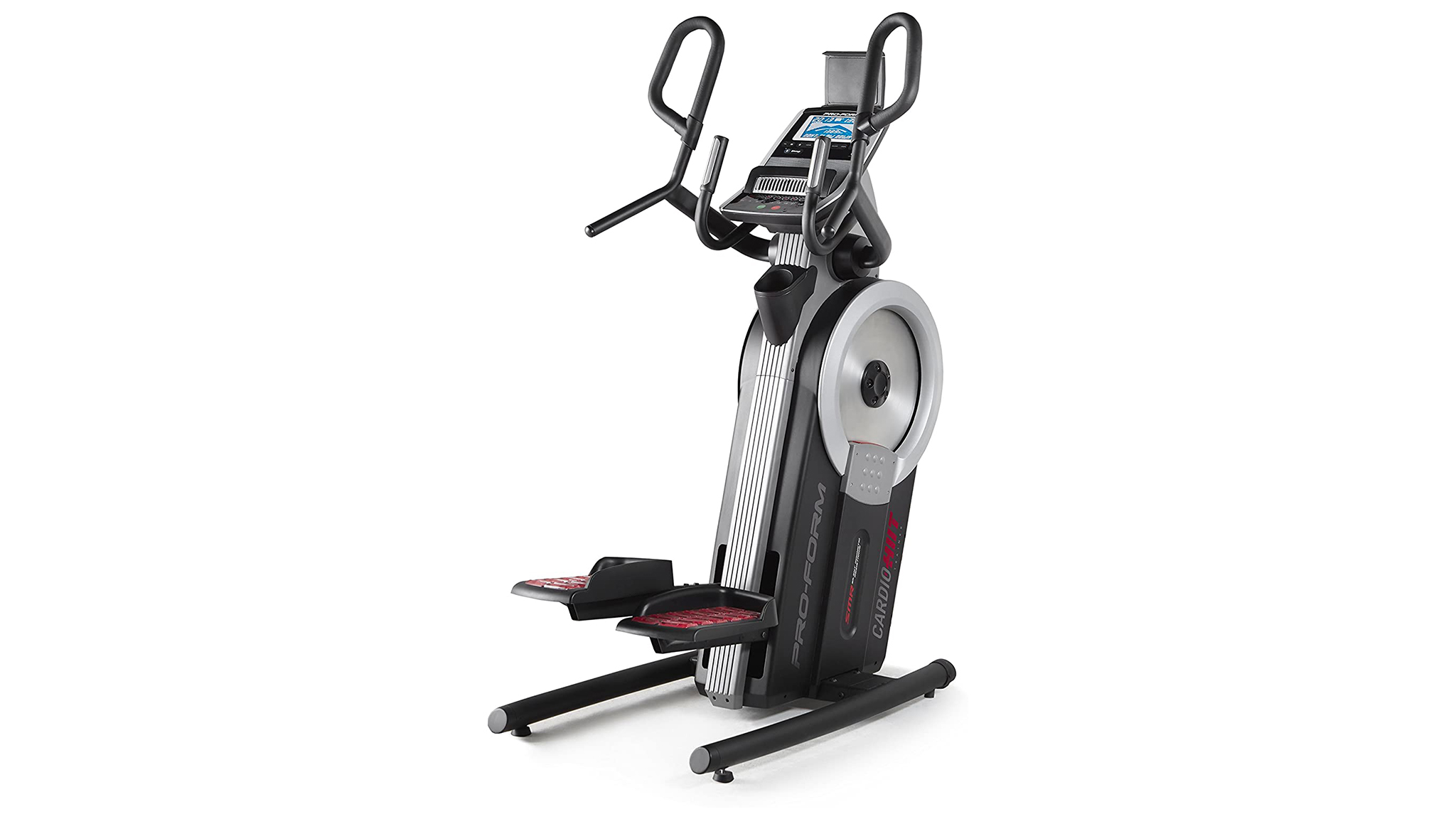
High-Intensity Interval Training or HIIT is a popular training technique that involves working out at 100% of your maximum capacity, followed by short bursts of recovery. This hybrid fitness machine combines the smooth, low-impact motion of a cross trainer with the intensity of a stair climber. The result? An intense workout that’s also kind on your joints.
If you like to challenge yourself then the Carbon HIIT H7 is the perfect choice for you. It keeps your heart pumping, burns more calories than a regular elliptical machine, and activates a wider range of muscle groups by simulating stair climbing and boxing.
Not only is this machine impressive when it comes to helping you burn the maximum amount of calories in the minimum amount of time but it’s also a winner if you’re short on space. Its compact footprint takes up half the space of a normal elliptical, making it a great option for your home gym, and the 24 levels of magnetic resistance offered by the 30lb flywheel create a smooth and silent workout.
And the perks don’t stop there. Purchase a 3-year iFit membership for up to 4 users ($39/month over 36 months) and the H7 is free. With access to Google Map trails, outdoor workouts with personal trainers, and an unlimited library of workouts, iFit is one of the best online fitness programs, making this a pretty outstanding deal.
The best elliptical machine for multiple users
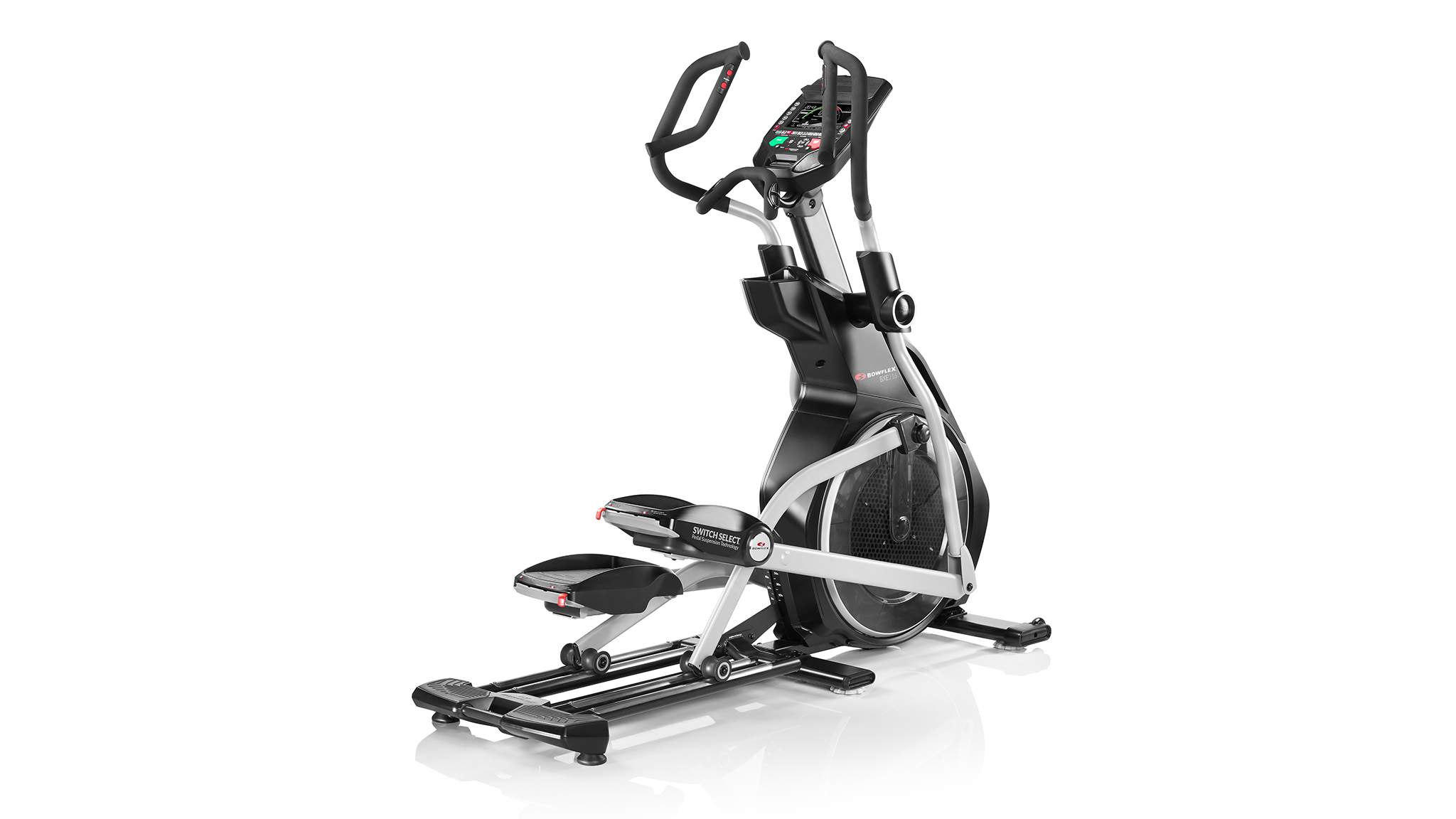
Bowflex’s top of the line elliptical machine, the beastly BXE216 Cross Trainer is the perfect addition to your home gym. Offering a low impact workout for any skill level, this trainer can accommodate up to 400 pounds in weight and comes with a heavy 35-pound flywheel, a 22-inch stride path, 11 built-in workout apps, and a 0 to 15 percent motorized incline adjustment.
The magnetic resistance means there’s no friction and makes for a smooth and quiet operation. With a front-drive design that helps maximize living space, an adjustable stride path, and support for up to four user profiles, this is a great trainer for both individuals and families.
You’ll love the extensive feedback the Bowflex BXE216 elliptical machine offers, including readouts for time, distance, speed, calories burned, and heart rate, along with sprints, intervals, and resistance. It also comes with a generous two-year warranty and if you’re not satisfied, you can return the trainer within six weeks for a full refund.
The best affordable elliptical machine
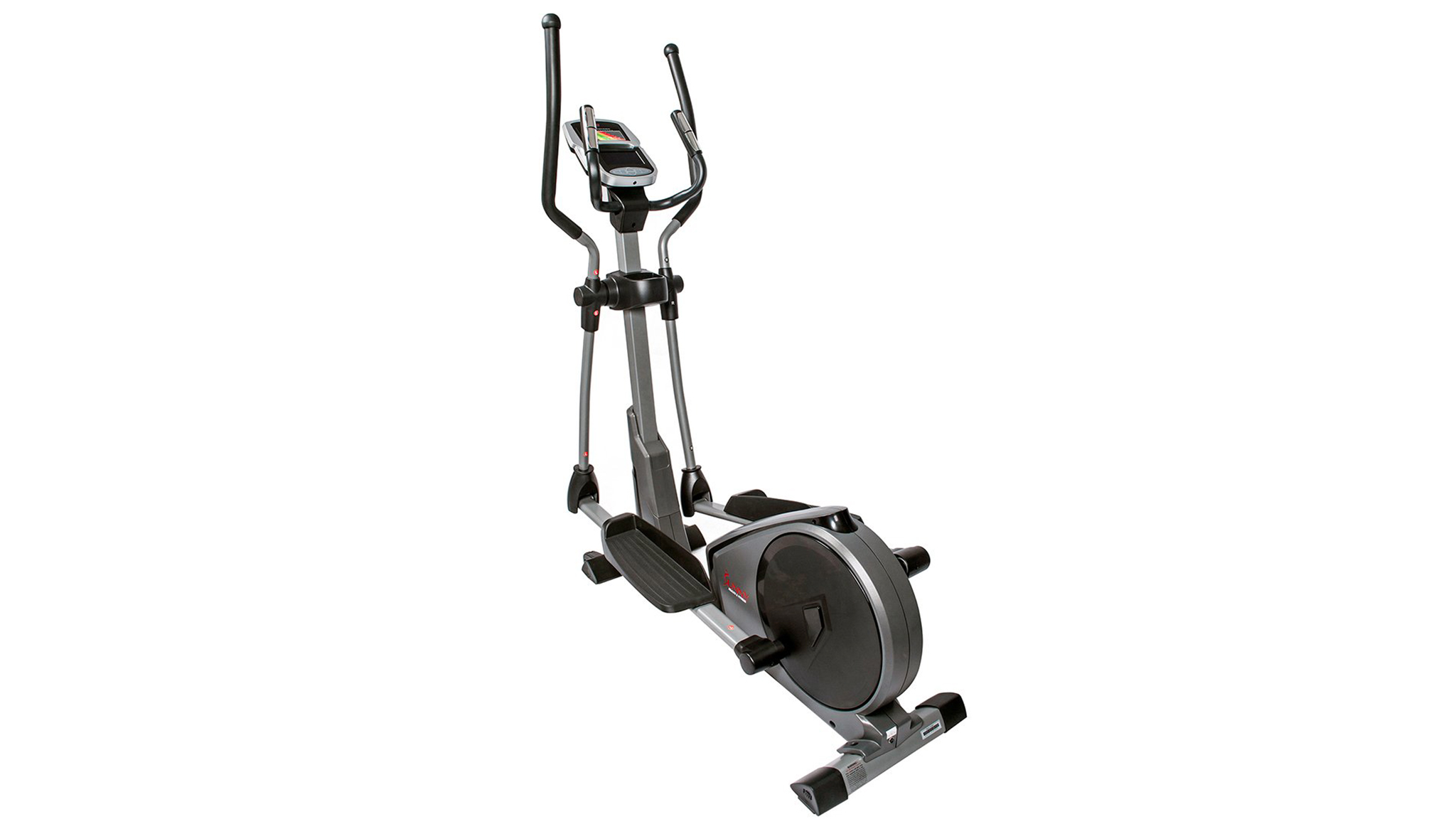
If you’ve been after an elliptical machine that offers an impressive amount of built-in workout programs, a variety of resistance levels, and an ability to offer you a full-body workout without the huge price tag, then you’re in the right place.
This top of the line model will keep both your waistline and your wallet happy coming jam-packed with features at an affordable price. The solid construction and magnetic resistance make for a sturdy and quiet machine and the SF-E3912 comes with one of the most advanced monitors in its price range, with the large LCD screen offering excellent readability.
There’s no online connectivity or Bluetooth with this model but you can track your workout data and heart rate and with 24 in-built workout programs, focusing on everything from body fat to watt generations, you’re bound to find plenty to keep you challenged.
We love the double set of handlebars, with the moving set being perfect for full-body workouts and the fixed set being great if you’re a beginner and feel safer with the extra stability.
The one drawback is the short stride length. At just 14-inches we wouldn’t recommend this if you’re over 6-feet tall but that aside, this cross trainer offers a great array of features without the huge price tag.
The best elliptical machine for beginners
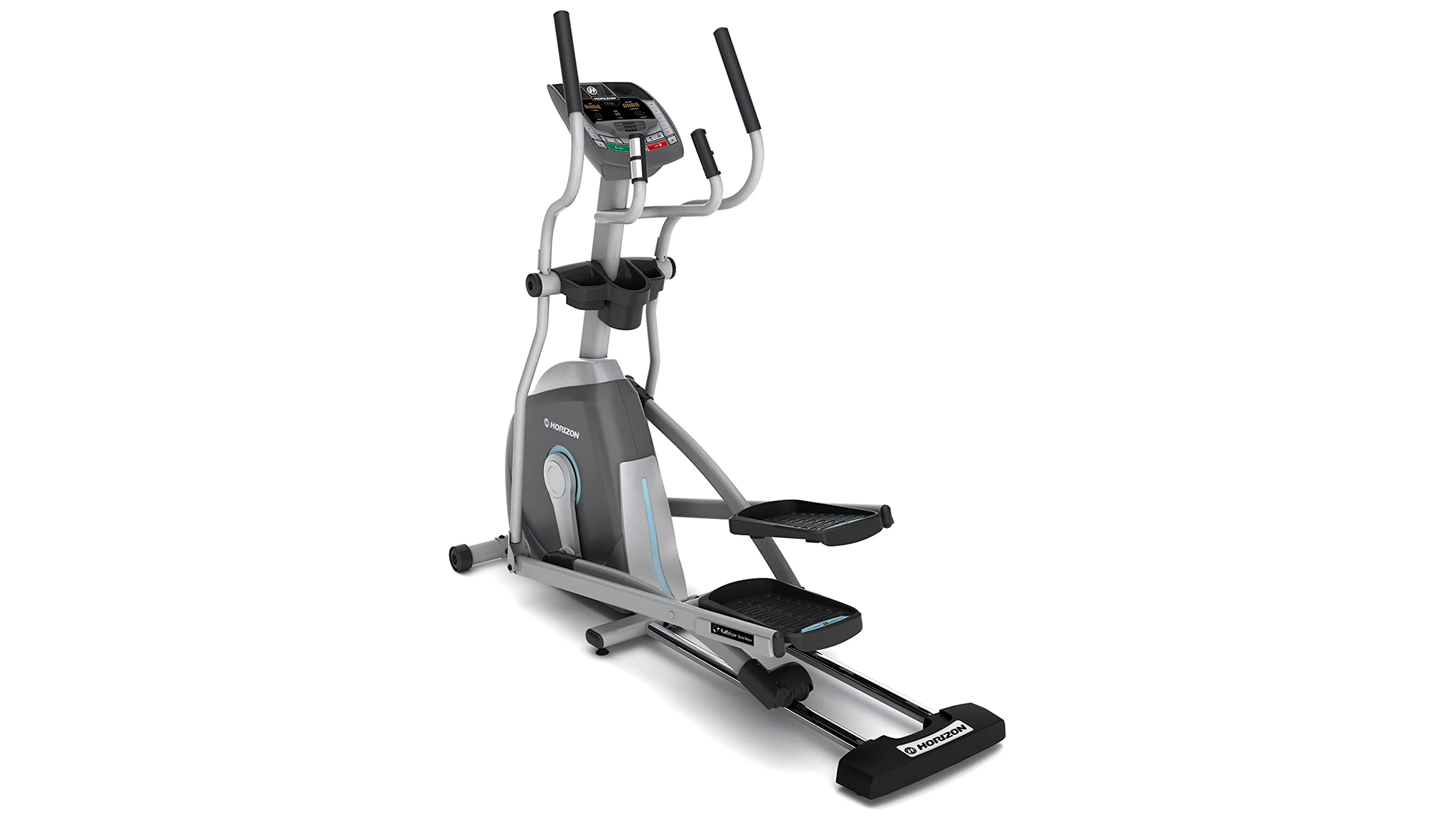
While the Horizon Fitness EX-59 elliptical machine is a great buy for fitness enthusiasts of any skill level, it’s been manufactured with beginners in mind, making it the perfect choice if you’re new to ellipticals and want to test the waters.
Unlike many other cross trainers in this price range, the EX-59 comes with a comfortable 18” stride and a strong and sturdy frame, ensuring you stay upright as opposed to leaning forward. You have the choice of 10 resistance levels and 10 built-in workout programs so you can focus on anything from calorie burning to interval training.
The built-in Bluetooth speakers are a nice touch for an entry-level model and means you can wirelessly connect your phone or tablet and blast your favorite tunes while you work out. And the USB port means you won’t drain your battery’s juice while you do it.
We love that by gripping the handlebars you can get a rough idea of your heart rate and you can also track time, speed, distance, and calories burned on the 4.5” screen. The 14lb flywheel is light so you’ll likely want to upgrade to a more advanced machine down the line but the EX-59 is a great budget-friendly cross trainer for beginners that offers more than enough features to get you started on your fitness journey.
The best elliptical machine for guided workouts

While it may not be the cheapest machine in our lineup, the heavy-duty Nautilus E618 Elliptical Machine offers exceptional value when compared against some of the more expensive models on the market. Aimed at those wanting to achieve at a higher level, the Nautilus E618 certainly lives up to its description with its 30-pound flywheel that’s a good 5 pounds heavier than other trainers in this price range.
If you’re a data-orientated exerciser, then this elliptical will appeal to you thanks to its Bluetooth connection, wireless heart rate monitor, pulse grips, built-in tracking app, and ability to sync with a variety of fitness apps. The reading rack can also accommodate an iPad or tablet and since this model has two LCD consoles, one will remain visible while you’re reading.
The elliptical machine offers 25 settings and an incline of up to 15 percent. The 22-inch stride is 2 inches longer than most models and while fixed, it’s a great choice for taller users. You can customize the heel support with the adjustable pedals and the console, while not as engaging as other machines, is loaded with useful training programs.
The best home elliptical machine under $1,000
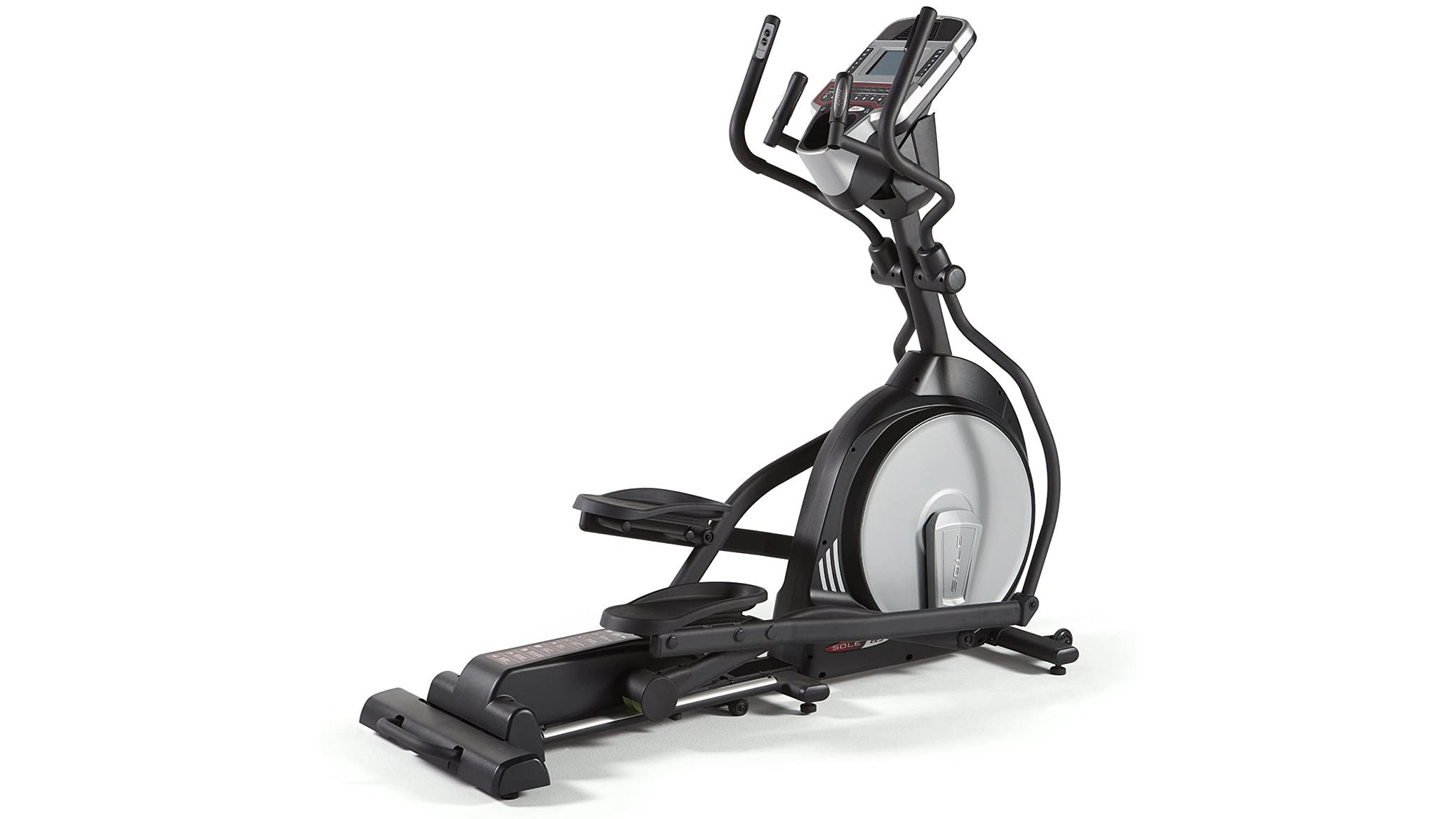
Powerful, durable, and affordable, the Sole Fitness E25 Elliptical Machine offers an impressive combination of functions and features. Sole has earned an outstanding reputation over the years for making high-quality fitness equipment and this cross trainer is no exception.
With a 20” stride length and a 350lb weight limit, this cross trainer will comfortably fit most users. You’ll love that the moving handlebars have built-in incline controls making it super easy to swap between the 20 incline settings on offer and work different muscle groups.
We like that the oversized articulating and adjustable foot pedals work to reduce stress and injury to the knees and joints by creating a more natural movement and while there aren’t as many built-in workout programs as other models in this price range, the usual mix of strength training, interval training, and fat burning are all on offer.
The inclusion of Bluetooth means you can connect your mobile device with the Sole Fitness app to store your fitness data and track your progress, and the integrated tablet holder allows you to safely dock your smart device so you can watch shows, read, or follow your workout data.
The best elliptical machine for varied workouts
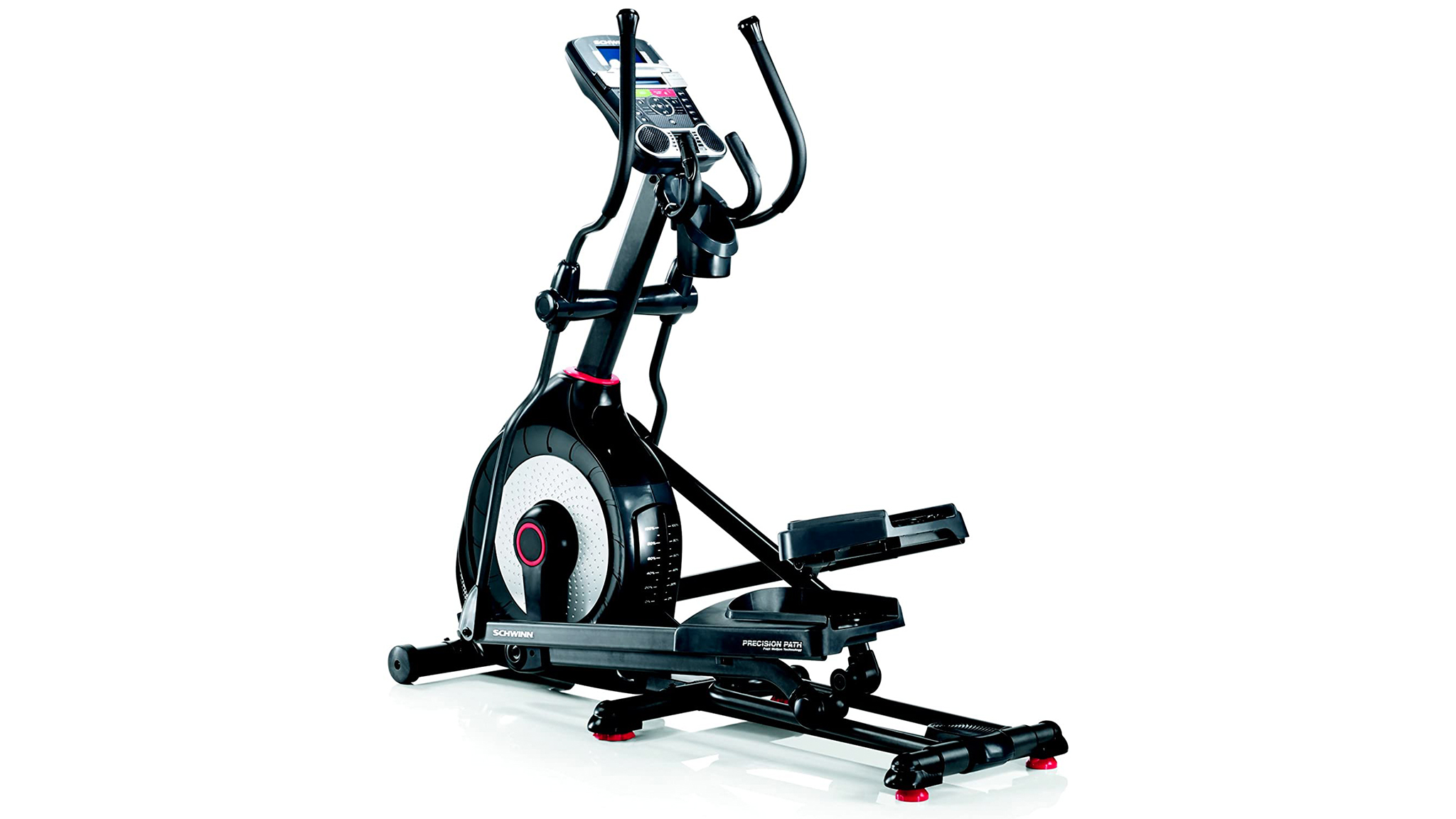
When you buy a Schwinn you know you’re getting a quality product and this model is no exception. Offering 25 resistance settings and 29 different programs, this is a great choice if you want lots of variety to keep your workouts interesting. It also comes with a 20-pound flywheel, a 20-inch stride length, and 4 different user settings, making it a solid investment for families.
The Schwinn 470 Home Elliptical Trainer comes with a USB charging port so you can keep your phone juiced up while you sweat and the speakers ensure you can blast your favorite tunes to keep you motivated while you stride it out. If you’re looking to burn calories fast, then this model also has six settings you can choose from and a slope of up to 10% to help you target different muscle groups.
The 3-speed fan will help you keep cool while you workout, and we like that this Schwinn elliptical machine syncs with a variety of fitness apps and is Bluetooth-enabled so you can transfer your data between devices to help you stay on track with your fitness goals.
How to choose the best elliptical machine for your home gym
Before you buy any type of exercise equipment, fitness experts recommend first thinking about what you hope to accomplish. "Is your goal to build muscle? Lose weight? Prepare for a specific sport? Rehabilitate an injury? The machine you choose should reflect your goals,” says physiologist Tom Holland
"Elliptical machines provide a great aerobic workout without stressing your joints." All the ellipticals we reviewed have the most important features we identified – heavy flywheels for smooth momentum, cushioned pedals, moving handlebars, interactive consoles and built-in speakers.
The best elliptical machines have adjustable stride lengths, adjustable pedals and heart rate monitoring straps. They also have connected consoles that sync with popular fitness apps like iFit and MapMyRun.
You’ll also want to think about incline and resistance. Varied incline levels target the muscles in your calves, quads and glutes and provide a more realistic trail-training experience.
Best elliptical machines FAQ
What is an elliptical machine?
Elliptical machines are stationary exercise machines that offer you an upper body and lower body workout at the same time. They’re also called elliptical trainers or cross-trainers and you’ll likely be familiar with them from the gym.
With your legs firmly planted on large pedals, you take strides as if walking forward through the air. At the same time, your arms push and pull large handles so you get an upper body workout too. Once you’ve got into the swing of it, you can increase the resistance to add more of a challenge.
If you’re new to the elliptical, it can feel strange at first. Yet the good news is the movement mimics walking so you can quickly get the hang of it once you get into the rhythm. The position on the machine is similar to running so it’s a good choice for any runners recovering from an injury. It’s thanks to these floating foot pedals that you don’t have to worry about joint pain as there is less impact compared to pounding the pavement.
This is one of the major advantages of cross-trainers which can put it strides ahead of other kinds of home gym equipment. You get the combination of the benefits of a high-intensity cardio workout like a running machine as well as it offering a low-impact workout that’s easy on the joints, as with an exercise bike.
So if you’re looking for a low-impact workout which is gentle on your joints, a cross-trainer can be a great choice. There’s a lower risk of injury on an elliptical and it’s ideal for people rehabilitating after an injury. On top of that, you’ll get a great cardio workout that targets your upper and lower body muscles.
Should you buy a rowing machine or elliptical trainer for a full body workout?
Can’t decide between a rowing machine and an elliptical trainer? Both are great choices for a cardio workout that targets the muscles in both the upper and lower body, all from the comfort of your home. The right one for you will depend on what you’re looking for.
With a rowing machine, you’ll get an intense upper body workout activating the arms, back and chest as well as your legs. It’s a fast, fun way to enjoy a cardio session while building strength. Be mindful that you’ll need to get to grips with proper form, both to reap the most benefits and to reduce the risk of injury.
Yet with the best elliptical machines, the workout is more evenly distributed across the body. If you’re looking for a gentler option for a full-body workout then you may want to opt for the cross-trainer. For some, the movement on an elliptical comes more naturally as it mimics walking.

What are the health benefits of elliptical machine training?
Some research has argued that using an elliptical machine revs up your pulse higher than if you were using a running machine. According to guidance shared by the Mayo Clinic, elliptical training is also less stressful on your knees, hips and back. As cross-trainers come with movable handlebars, not only are you getting your heart rate pumping, you’re also giving yourself an upper body workout.
You can adjust the intensity of an elliptical machine to suit your energy levels. The fact that it’s low-impact means it could help you rehab an injury if you have your doctor's permission to do so.
An elliptical machine is a great time saver too. If you have a busy schedule, this single piece of equipment can give you a total body workout in 30 minutes or less.
Finally, there’s evidence that exercise benefits your sleep, helping you to fall asleep more quickly . A good night's sleep also boasts recovery, so check out our guide to the best mattress online to ensure you’re getting the best sleep possible so you can reap the maximum benefits from those elliptical machine workouts.
